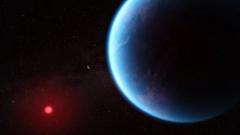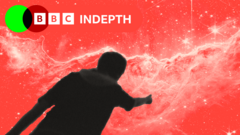Scientists from Cambridge University are buzzing with excitement after uncovering potential signs of life on a distant planet named K2-18b. This intriguing world, orbiting a star far from our Solar System, was studied using NASA's advanced James Webb Space Telescope (JWST). The team detected chemical signatures in K2-18b's atmosphere that are typically produced by simple organisms on Earth.
This marks a second promising detection of such chemicals, with previous findings met with skepticism. Prof. Nikku Madhusudhan leads the research, expressing optimism that further analysis could confirm the presence of life within one to two years. K2-18b is quite a sizeable planet – about two and a half times the Earth’s size – and located a staggering 700 trillion miles away.
The chemical signature discovered includes dimethyl sulphide (DMS) and dimethyl disulphide (DMDS), which on Earth are byproducts of marine phytoplankton and bacteria. Prof. Madhusudhan was surprised to find these gases in quantities much higher than on Earth—potentially indicating a thriving ecosystem.
However, it's essential to note that this discovery comes with caveats. The findings are still tentative, requiring a confidence level of 99.99999% to be considered valid. Current evidence stands at 99.7%, which, although promising, is not enough for definitive claims. Scientists emphasize that we must explore whether these gases could also originate from non-biological processes.
Several hypotheses about K2-18b’s geological makeup are still up for debate. While some propose the presence of a vast liquid ocean, others speculate about the possibility of a mini gas giant, complicating the quest for conclusive answers.
The research team is committed to further investigations, collaborating with independent groups to verify their findings. As the debate rages on, scientists like Prof. Madhusudhan believe we may be on the cusp of answering one of the most profound questions in science: Are we alone in the universe? The results of this research have been documented in The Astrophysical Journal Letters.







